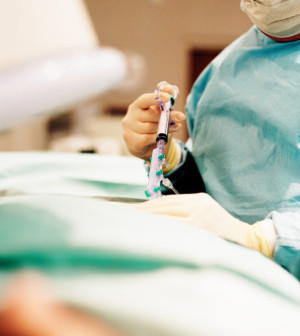- Skip Storing This Everyday Product in the Fridge Door
- Green Tea + B3 Pairing May Boost Brain Health
- Navigating Your Midlife Crisis: Embracing New Possibilities
- City Raccoons Showing Signs of Domestication
- Mapping the Exposome: Science Broadens Focus to Environmental Disease Triggers
- One Week Less on Social Media Linked to Better Mental Health
- Your Brain Changes in Stages as You Age, Study Finds
- Some Suicide Victims Show No Typical Warning Signs, Study Finds
- ByHeart Formula Faces Lawsuits After Babies Sickened With Botulism
- Switch to Vegan Diet Could Cut Your Greenhouse Gas Emissions in Half
New Look at Past Studies Highlights Importance of Mammograms


Often-conflicting results from studies on the value of routine mammography have only fueled the debate about how often women should get a mammogram and at what age they should start.
In a new analysis of previous research, experts have applied the same statistical yardstick to four large studies and re-examined the results. They found that the benefits are more consistent across the large studies than previously thought. All the studies showed a substantial reduction in breast cancer deaths with mammography screening.
“Women should be reassured that [mammography] is quite effective,” said study researcher Robert Smith, senior director of cancer screening for the American Cancer Society. Smith is scheduled to present the findings this week at the 2013 San Antonio Breast Cancer Symposium.
The findings also were published in the November issue of the journal Breast Cancer Management.
In 2009, the U.S. Preventive Services Task Force (USPSTF), an independent group of national experts, updated its recommendation on mammography, advising women aged 50 to 74 to get mammograms every two years, not annually. The group also advised women aged 40 to 49 to talk to their doctors about benefits and harms, and decide on an individual basis whether to start screening. Other organizations, including the American Cancer Society, continue to recommend annual screening mammograms beginning at age 40.
In assessing mammography’s benefits and harms, researchers often look at the number of women who must be screened to prevent one death from breast cancer — a number that has ranged widely among studies.
In assessing harms, experts take into account the possibility of false positives. Other possible harms include finding a cancer that would not otherwise have been found on screening (and not been problematic in a woman’s lifetime) and anxiety associated with additional testing.
Smith’s team looked at four large, well-known reviews of the benefit of mammography. These included the Nordic Cochrane review, the U.K. Independent Breast Screening Review, the USPSTF review and the European Screening Network review.
To standardize the estimates of how many women need to be screened to prevent one breast cancer death, the researchers applied the data from each of the four reviews to the scenario used in the U.K. study.
Before this standardized review, the number of women who must be screened to prevent one death ranged from 111 to 2,000 among the studies. Smith’s team found that estimates of the benefits and harms were all based on different situations.
Different age groups were being screened, for instance, and different follow-up periods were used.
Some studies looked at the number of women for whom screening is offered and others looked at the number who actually got mammograms. There often is a huge difference between those two groups, Smith said.
“Thirty to 40 percent don’t show up, and they are counted as having a mammogram [although they did not] when they die of breast cancer,” he said. “This hugely depresses the benefits.”
“If you don’t have a long follow-up, you are not able to accurately measure the benefit,” Smith said. “Some women die 20 or more years after the diagnosis.”
After the researchers used a single, common scenario, the gap in benefit estimates among studies dropped substantially — ranging from 64 to 257 women who must be screened to prevent a single death from breast cancer.
Dr. Michael LeFevre, co-vice chairman of the USPSTF, reviewed the new findings but was not involved in the study. “For women aged 50 to 69, it confirms that mammography can reduce deaths from breast cancer,” he said.
The new analysis, LeFevre said, doesn’t include women in their 40s, which is one of the central parts of the ongoing debate about the use of screening mammography.
The task force is in the process of updating the 2009 recommendation, said LeFevre, who is also a professor of family and community medicine at the University of Missouri. “[The update] is not in response to the re-analysis,” he said. “It’s standard timing for an update.”
More information
To learn more about the task force’s recommendations for screenings, visit the U.S. Preventive Services Task Force.
Source: HealthDay
Copyright © 2025 HealthDay. All rights reserved.










